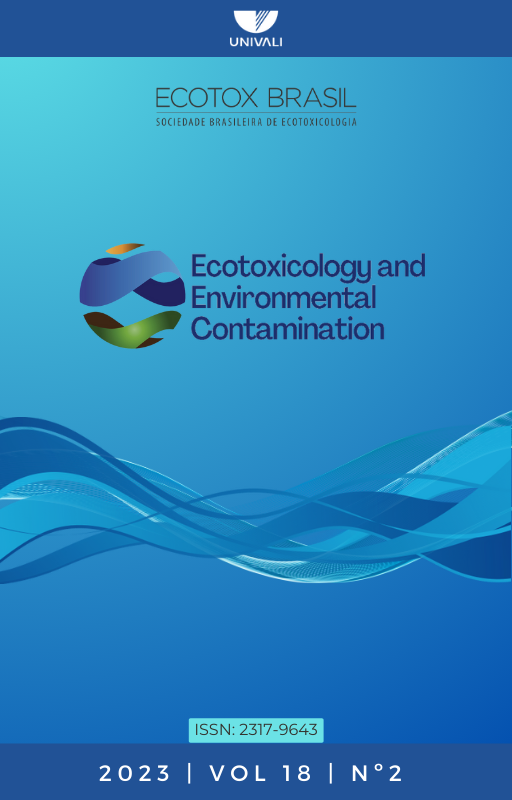Mechanisms of Tolerance in Metal-exposed Brown Algae and the Importance of Monitoring Studies: A Review
DOI:
https://doi.org/10.5132/eec.2023.02.07Palavras-chave:
Antioxidants, Chelators, Exudates, Heavy metal, Phaeophyceae, PolysaccharidesResumo
Marine habitats are under threat from the continued release of contaminants into waterways, and monitoring becomes crucial
to future management decisions and regulations to protect these environments. A key aspect of this monitoring is the choice
of a marine species that is able to cope with this pollution, and the tolerant species exhibit more relevant ecological responses.
These species-responses are called biomarkers of tolerance and are tested using a variety of measurements that reflect exposure
to chemicals. Marine brown macroalgae can be found in a wide range of marine environments, including those with high metal
pollution and they are widely used in monitoring programs. Mechanisms of tolerance are vital to the survival of this group of
macroalgae in polluted habitats, but these mechanisms have not yet been reviewed. The aim of this critical review article is
to summarize the historical information available regarding metal tolerance in marine brown macroalgae. We review studies
about tolerance mechanisms in marine brown macroalgae exposed to metals, conducted both under experimental conditions
and in the field. Also, bibliometric analyses are used to identify the most relevant investigations, country contributions and
gaps in knowledge on the topic. Results showed that the principal extracellular tolerance mechanisms described for marine
brown macroalgae are physical exclusion, exudated ligands, and metal-binding to the cell wall. Epiphytic microorganisms
were also found to be capable of accumulating a given metal. Internally, metallothioneins and phytochelatins were important
chelators; furthermore, antioxidant responses may increase metal tolerance. Omics analyses were used to reveal the internal
mechanisms used by these macroalgae. Biomarkers of tolerance have occasionally been used in monitoring studies, providing
additional information regarding tolerance to complex chemical mixtures found in the field. Future studies should make use of
these biomarkers to improve our understanding of metal-tolerance strategies.
Downloads
Downloads
Publicado
Como Citar
Edição
Seção
Licença
Copyright (c) 2023 Ecotoxicology and Environmental Contamination

Este trabalho está licenciado sob uma licença Creative Commons Attribution 4.0 International License.
Copyright © 2006 ECOTOX-BRAZIL
Copyright notice: It is a condition for publication that manuscripts submitted to this journal have not yet been published and will not be simultaneously submitted or published of elsewhere. By submitting a manuscript, the authors agree that copyright for their article is transferred to the Sociedade Brasileira de Ecotoxicologia (ECOTOX-Brazil) if and when the article is accepted for publication. The copyright covers the exclusive rights to reproduce and distribute articles, including reprints, photographic reproductions or any other reproduction of a similar nature, including translations. No part of this publication may be reproduced, stored in a retrieval system or transmitted in any form or by any means, electronic, mechanical, photocopying, recording or otherwise, without permission of the publisher.
Notice: While every effort is made by the JBSE, editors and editorial board to see that no inaccurate or misleading data, opinions or statements appear in this journal, they wish to make it clear that the contents of the articles and advertisements published herein are the sole responsibility of the contributors or advertisers concerned. Accordingly, the JBSE, the editorial board and editors and their respective employees, officers and agents accept no responsibility or liability whatsoever for the consequences of any inaccurate or misleading data, opinion or statement.




